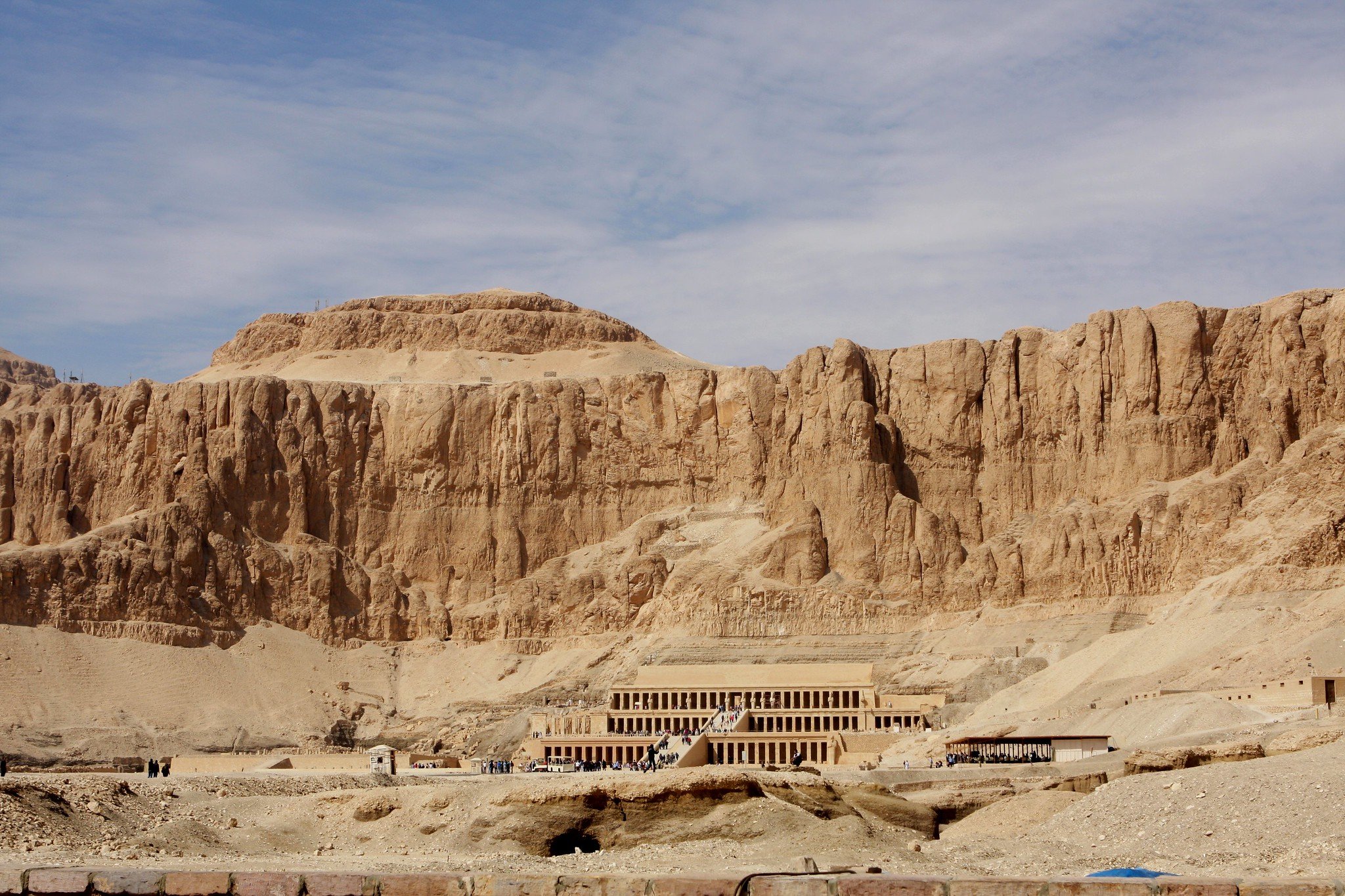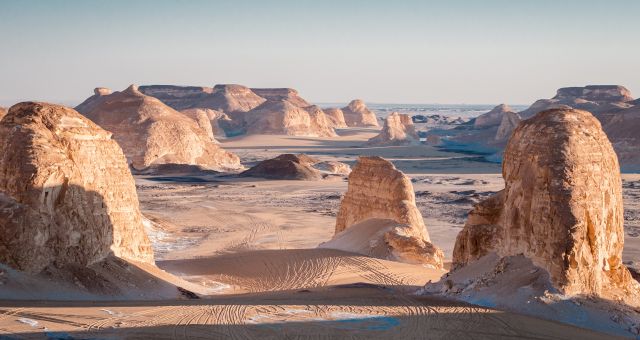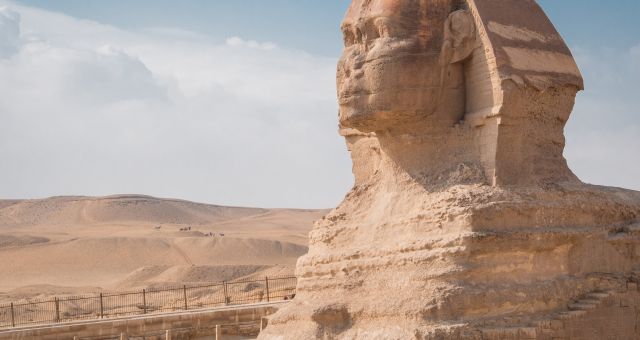I got out of Luxor train station after a night train from Cairo, rubbing sleep off my eyes and feeling excited to explore the city. My first thought about Luxor? Omg, it’s just like the video game, Assassins Creed the Origins! Luxor was closest to how I’d imagined Egypt must have been like in the time of pharaohs.
Luxor in 2 Days
Much of Egypt’s ancient history can be discovered in Luxor, a city once known as Thebes. Luxor is the oldest continuously inhabited city in Africa, having been around since 3200 BC. There are many stunning ancient monuments and tombs in the area surrounding Luxor to occupy real history buffs for weeks.
Knowing myself though, someone who much prefers natural beauties like Egypt’s white desert, 2 days in Luxor was enough. I didn’t want to get templed-out, you know?
During my 2 days in Luxor, I dedicated one day each for the sights on East Bank and then West Bank. Because of my short time in Luxor (also see above about getting templed-out), I focused on only the highlights; the best tombs and temples in Luxor. On this post I’ll tell you how to organize your 2 day Luxor visit.
Day 1, East Bank:
Luxor Temple, Luxor Museum, Karnak Museum
I visited all of these by foot.
Day 2, West Bank:
Valley of the Kings, Temple of Hatshepsut, Ramesseum, Medinat Habu, Colossi of Memnon
I hired a taxi. Private tours are also available (from $80, includes admission).
Important Note: Pricing, the opening of tombs, and really everything in Egypt seems to be constantly changing. Use this post as a rough guide only.
Luxor in early morning light. I got off my morning train from Cairo, dropped my bag off, and started exploring right away to take advantage of the cooler air and beautiful light.
The mosque at Luxor Temple, seen from downtown Luxor. The road you see here goes directly from the train station to the Nile riverbank where the temple is located.
Day 1: East Bank
East Bank in Luxor is where most accommodations, especially budget ones, banks, markets, etc are located. This is also where the train station is located. If you arrive in Luxor after taking the night train from Cairo like me, you’ll be on the East Bank. Most known sights on East Bank include:
Luxor Temple
Cost: 160 EGP
If you see minarets coming out of what looks like an Egyptian temple, you know you’re at the right place. Within Luxor Temple complex lies Abu Haggag Mosque. Before it was a mosque, it was a church. And before it was a church, it was an Egyptian temple. This makes Luxor Temple the site of 3400 years of continuous religious worship.
The temple is located on the Nile bank very close to the main part of the town, making it easily accessible by foot. After I got off the night train, I dropped my backpack at the hostel and arrived at the temple after a short walk.
Guardians of Luxor Temple
Luxor Museum
Cost: 160 EGP
The museum is modern and nicely curated. With English labels, restrained lighting, and focus on high quality objects, the museum was a delight. One of the highlights was a delicately carved statue of Statue of Tutmosis III, you’ll find it right by the entrance. I walked here from Luxor Temple.
Karnak Temple
Cost: 200 EGP
Karnak was the most important religious complex in Ancient Egypt. From its decorated pillars, tall obelisks, and mere size, Karnak was simply magnificent. As you walk through the complex, make sure to check out the various renderings of what the temple must have looked like before the roof collapsed.
On the map, Karnak Temple didn’t look that far from the Museum so I decided to walk. I regretted it halfway. It was so hot and there was barely any shade. In retrospect, I would’ve taken a taxi. But then, I wouldn’t have ended up meeting a couple of Egyptian college girls with whom I had a lovely conversation.
One of the many obelisks of Karnak Temple
Day 2: West Bank
If you arrive by train in Luxor, a 15 min walk from the train station will get you to the river Nile. A short ferry ride across will get you to West Bank. Ferry men will find you before you see them. It should cost 5 EGP to cross.
Most restaurants and tourist activities lie on the East Bank which makes West Bank is a little quieter and more residential. Some tourists prefer staying on the West Bank for that very reason.
While sites on East Bank were all pretty close to each other and walkable. The sites on West Bank are more spread out. More adventurous souls have gone on bikes to visit them. There’s a bike rental a short walk from the ferry dock. The road is relatively flat so it’s definitely do-able but if you decide to this (kudos!) make sure to wear crazy-ass sun protection because the sun is intense and there’s no shade (it’s a desert!)
How I did it: I got a taxi driver to pick me up at the hotel. You could arrange this from your hostel. If you can find someone to split the cost, it can be very affordable.
West Bank of Luxor, who knows how many more tombs are hidden underneath the desert sand.
Valley of the Kings
Cost: 240 EGP (includes three tombs of your choice)
As the numerous giant tour buses can attest, The Valley of the Kings is the most famous destination in Luxor.
This nondescript valley was used as a burial place for royal families, high priests, and other elite. The most famous occupant of the valley is Tutankhamun. Howard Carter discovered the boy king’s intact tomb in 1922. Even though Tut’s burial treasures are now located in Cairo Museum, you can still see his mummy – minus the golden death mask – here.
Sealed underground for centuries and protected from pollution, the tombs here are the most preserved piece of ancient history I’ve seen. Looking at the colorful paintings decorating the burial chambers, you’ll forget that they were painted almost 4000 years ago. It was surreal.
Colorful ceiling from one of tombs in Valley of the Kings
Your 240 EGP standard entrance price includes 3 tombs of your choice, out of a dozen or so available with a standard ticket. There are also some tombs that require their own separate tickets (e.g. Tutankhamun, Seti I). You have to decide beforehand and pay at the ticket booths which additional tombs you want to visit.
Some of the tombs I visited:
- Ramses IV (KV2) I think this is the prettiest tomb included in the standard entry price that I saw.
- Rameses IX (KV6) This tomb is long. The interior decoration was just so-so.
- Tutankhamun (KV62), 200 EGP: The most famous tomb in the valley. Not the prettiest nor most colorful tomb, but it’s Tut and you do get to see his mummified body – minus the death mask. I feel that I would appreciate his tomb more if I had visited Tut’s exhibition in Cairo Museum first.
- Ramses V & VI (KV9), 80 EGP: This tomb is very beautiful with an elaborate Goddess Nut ceiling.
Look at the colors, and imagine all of these rooms and alcoves dug out from solid earth.
Temple of Hatshepsut / Deir el-Bahir
Cost: 100 EGP
I wasn’t too impressed by the temple itself to be honest. The temple has been heavily renovated such that even though it looks hella impressive from far away, up close it doesn’t have the same kind of charm as the other temples. They were also in the middle of setting a huge stage for a show right in front of the temple. All of that plus the massive amount of tourists took a lot from it.
Its location however, is absolutely stunning.

The Temple of Hatshepsut near the Valley of the Kings.
Ramesseum
Tickets for Ramesseum and Medinat Habu can be bought at Antiquities Inspectorate ticket office on the East Bank. If you take a taxi, you taxi driver will know where it is and will stop on the way.
The site of the Ramesseum includes the fallen colossal statue of a pharaoh’s head which really makes you appreciate the size of these things.
Ramesseum and its iconic toppled giant statue.
Medinat Habu
Medinat Hebu (Temple of Ramses III) was my favorite temple in Luxor. The reliefs that cover the pillars, ceilings, and walls were exquisite, I couldn’t stop staring. I highly recommend adding a stop at this temple to your West Bank itinerary.
The carvings of Medinat Habu temple
Colossi of Memnon
Colossi of Memnon – this pair of rock giants used to stand guard in front of a memorial temple for Amenhotep which is now in ruins. No fee involved for this quick photo op.
Where to Stay in Luxor
To be honest, Luxor itself is not overly charming. Chaotic and dusty streets overrun by persistent touts makes exploring Luxor on foot an exhausting exercise. However, I managed to find some oasis of calm on the back streets of Luxor: Sofra is a charming restaurant serving delicious Egyptian fares, conveniently located close to Bob Marley hostel. Beau Art-space is a newly-opened art store/coffeeshop with AC and free wifi. It’s tucked away in a non-descript alley.
There are many accommodation options in Luxor. Here are some I hand-selected for y’all.
Budget:
Bob Marley Peace Hotel is a favourite among budget-conscious travellers and offers a mixture of private rooms and dormitories. It’s also next to Sofra (see above). A dorm bed starts at $7.
New Everest Hostel is 5 minute walk from the train station and located one block from the main street. Very central location to Luxor Temple (walking distance), shops, and restaurants. I felt safe and very well taken care of by the very friendly and helpful owner.
Luxury:
Pavillon Winter Luxor (East Bank), a historical building overlooking the Nile and Luxor Temple with a swimming pool set in a beautiful tropical garden. Rooms start at $90 room, which is a steal for what you get.
Tips for Visiting Luxor in 2 Days
- Getting to Luxor from Cairo with the night train was really great. It was safe and very comfortable.
- Most of the tours in Luxor starts with The Valley of the Kings. Go there in the afternoon (around 3 PM) and enjoy it without the massive crowds.
- If you have the time, visit Dendera Temple. Many said it’s one of the favorite temples in Luxor area. You will need to hire a private taxi, it’s about an hour drive. Or get a private tour for $50 (this one).
- Wear long sleeves, pants, and a hat. I can’t stress enough how strong the sun is.
- Drink plenty of water. Personal water bottle filter (I have this Sawyer bottle) helps reduce the number of plastic bottles bought.
- Taxis within Luxor should cost 15-25 EGP.
- I got a taxi off the street of Luxor to take me to the sights on West Bank only for 350 EGP. I lucked out and got a great driver who even took me out for breakfast. Private tours of West Bank is available from $80 which includes admission fees (like this one). Not a bad deal.
- Only have 1 day in Luxor? There are tours that will take you to both East and West Bank in 1 day (like this tour). I don’t necessarily recommend it, but if you only have 1 day in Luxor it’s definitely better than nothing.
- If you have the time, a felucca ride down the Nile would be a pretty nice way to spend your evening. However there’s plenty of horror story abound. I’d recommend going with someone recommended by your hostel. Otherwise, bargain, bargain hard, and make sure to keep track of the time you’re on the felucca.




Questions and Comments
Comments are disabled. If you have any questions about the post, you can DM me on Instagram: @jacknjilltravel.